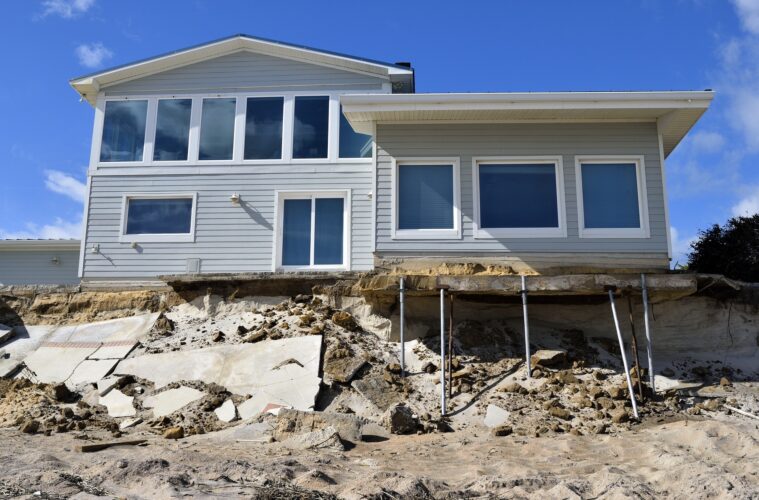
Water damage is one of the most common and costly issues that businesses can face. Whether it’s caused by natural disasters, plumbing problems, or human error, water damage can wreak havoc on commercial property, leading to structural damage, equipment failure, and even health hazards for employees and customers. As a business owner, it’s essential to know what steps to take when faced with water damage to ensure the safety of your employees, customers, and property. In this blog post, we’ll explore the basics of water damage restoration and provide practical tips for businesses to minimize damage, save money, and get back to business as usual as quickly as possible. Let’s get started:
Assess the Damage
Before beginning any water damage restoration process, it’s crucial to assess the extent of the damage. Depending on the severity of the water damage, different restoration methods may be required. First, identify the source of the water and stop it if possible. Then, evaluate the affected areas, including walls, floors, furniture, and equipment. Look for visible signs of damage, such as water stains, discoloration, or mold growth.
It’s also essential to check for hidden damage, such as water trapped behind walls or under floors. Document the damage with photos and videos, and keep a record of all restoration expenses for insurance purposes. By thoroughly assessing the damage, you can create a plan of action for the restoration process.
Hire a Water Damage Restoration Company
Once you’ve assessed the water damage, it’s time to hire a professional water damage restoration company. Attempting to handle the restoration process yourself can lead to further damage and health hazards. A reputable restoration company will have the necessary equipment, expertise, and experience for water damage cleanup and handle the restoration process quickly and efficiently. They can also help you navigate the insurance claims process and ensure that your property is restored to pre-damage conditions.
When choosing a restoration company, look for a licensed and insured company with a proven track record of success. Don’t hesitate to ask for references or check online reviews before making a decision. Hiring a professional restoration company can save you time, money, and stress in the long run.
Assess What Items and Materials Can Be Salvaged
Water damage can cause significant harm to materials and items in a business. After hiring a professional restoration company, the next step is to assess what can be salvaged and what must be replaced. Salvageable items may include furniture, equipment, and documents that can be dried and disinfected.
It’s essential to remove any items that cannot be salvaged, as they can become a breeding ground for mold and other health hazards. A professional restoration company can advise on the salvageability of items and help you create an inventory list of what needs to be replaced. By salvaging what is possible, you can save money on replacement costs and minimize disruption to your business operations.
Use the Right Tools and Techniques for Restoration
Restoring a property after water damage requires the use of specific tools and techniques. A professional restoration company will have access to industrial-strength equipment, including dehumidifiers, air movers, and moisture meters, to remove excess moisture and dry out the affected areas. They will also use specialized techniques to disinfect and deodorize the property, preventing the growth of mold and other harmful bacteria.
It’s essential to use the right tools and techniques to ensure that the restoration process is done correctly and thoroughly. Attempting to use household equipment or DIY methods can lead to incomplete restoration, further damage, and health hazards. Let the professionals handle the restoration process with their expertise and specialized equipment.
Create a Restoration Plan
Creating a restoration plan is crucial to ensuring that the water damage restoration process is completed efficiently and effectively. The plan should outline the steps to be taken during the restoration process, including which areas need to be prioritized, how long the restoration process will take, and what equipment and resources are needed.
The restoration plan should also consider any potential health hazards, such as mold growth or contaminated water. By creating a detailed restoration plan, you can minimize disruptions to your business operations, ensure the safety of your employees and customers, and restore your property to its pre-damage condition as quickly as possible.
Find Ways to Prevent Future Damage

After completing the water damage restoration process, it’s essential to find ways to prevent future damage. Consider implementing preventive measures, such as regular maintenance of plumbing and electrical systems, installing sump pumps, and sealing any gaps or cracks that can allow water to enter the property.
Ensure that employees are trained on how to respond to water damage emergencies and have access to emergency contacts for a quick response. It’s also crucial to have a disaster preparedness plan in place to minimize damage in case of natural disasters. By taking preventive measures, you can save money on costly repairs and minimize disruption to your business operations.
Water damage can be costly and disruptive for businesses, but it can be overcome with the right steps and professional help. By assessing the damage, hiring a restoration company, salvaging what’s possible, using the right tools and techniques, creating a restoration plan, and preventing future damage, businesses can minimize the impact of water damage. Don’t hesitate to contact professional restoration companies for help restoring your property and safeguarding it from future damage. With the right approach, you can get back to business as usual in no time.
Published by HOLR Magazine


